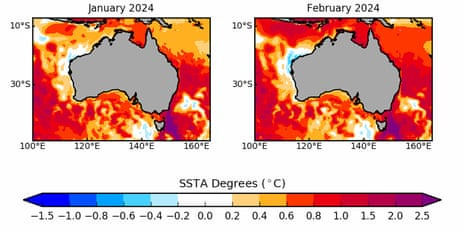Sunny climate, stormy climate | Weekly digest #16
This week we talk about a historic climate trial in the US, the death of thousands of Emperor penguin chicks in the Antarctic and the drought that is threatening global shipping in the Panama canal.
For the ones who are new here - Every week I bring to you 5 stories about the changing climate and its impact on us!
3 stormy ones - concerning stories that are a source of alarm
2 sunny ones - green shoots that tell you that all is not yet lost
If you would like to get future editions of the newsletter delivered to your mailbox, please hit subscribe.
Sunny news
In a historic ruling, US youth plaintiffs win climate case against the state

Youth plaintiffs in the climate change lawsuit at the courthouse in Helena, Montana, in June. Photograph: Thom Bridge/AP In an earlier newsletter edition, we had spoken about the historic trial where 16 young Montana residents had sued the State for violating their constitutional rights to a healthy environment.
Last week, the judge ruled in favour of the young people.
The judge affirmed the plaintiffs’ claim that a stable climate is included in a right to a “clean and healthful environment”, guaranteed in the state’s constitution.
The judge also found a provision in Montana’s Environmental Policy Act, which prohibited the state from considering climate impacts when permitting energy projects, to be unconstitutional.
Key take-aways
Trials can make a difference to climate action and more will come
Courts are affirming climate science
Climate litigation could still face an uphill battle
Sources to read further:
A French company is using discarded Oyster shells to make white cooling paint for roofs.
Cool Roof France has found an innovative way to use the 130,000 tonnes of waste oyster shells produced every year in France.
Traditional paint is made up of calcium, solvent and water. CRF takes a few tonnes of the discarded Oyster shells and uses the outer part of the shell - which is made from calcium - to replace the traditional calcium in its paint.
The oyster shell maximises the paint’s performance and makes it more durable.
The white paint helps in reducing the ambient temperature of buildings. It is estimated to reduce the average temperature by six to seven degrees Celsius
How will this help?
Europe has been seeing extreme heat waves for the last couple of years and people are looking for innovative ways to keep their homes or workplaces cool.
While air conditioning often proves effective, it is expensive and its environmental cost contributes further to the climate crisis.
Solutions like the one implemented by CRF can help reduce temperatures in the building - eliminating the need for air conditioning altogether or at least reducing the AC usage
We had looked at a similar solution in India in an earlier newsletter
Sources to read further:
Stormy news
Antarctic: Thousands of Emperor penguin chicks died last year as the sea ice broke apart early!

Emperor Penguins are the heaviest and tallest known Penguin species and are endemic to the Antarctic What are we talking about?
Emperor penguin colonies are found only in the Antarctic
They are heavily dependent on the sea-ice that forms in the winter for their breeding cycle.
The sea ice provides a stable platform on which they can lay and hatch their eggs. They brood their chicks on this sea ice till they fledge.
The young chicks need to develop waterproof feathers before they can leave the sea ice and go into the ocean and that typically happens around December - January. Historically the ice would start breaking around the same time.
Last year (2022), the sea ice broke out earlier than expected - in November. As a result 4 of the 5 emperor penguin colonies that were being observed suffered complete breeding failures and thousands of chicks died by drowning in the sea.
This was observed by scientists with the help of satellite images who described the event as a ‘catastrophic breeding failure’
Why did this happen?
Last year from mid-September to mid-December, we saw record-low sea ice in the Southern Ocean, especially along the west coast of the Antarctic Peninsula, a prime breeding ground for Emperor Penguins.
Experts links the causes for the current decline in sea ice to anomalously warm ocean water around the continent and a particular pattern of winds.
What is expected in the future?
More than 90% of emperor penguin colonies are predicted to be all but extinct by the end of the century, as the continent's seasonal sea-ice withers in an ever-warming world.
Sources to read further:
Severe drought in the Panama canal disrupts global shipping
The Panama canal is an artificial 82 km long waterway that connects the Atlantic ocean with the Pacific ocean. 6% of the world’s cargo passes through the canal!
The water levels in the canal are currently extremely shallow forcing the canal authorities to restrict the number of vessels that go through the canal every day resulting in a huge backlog. They have also restricted the maximum weight of the vessels that are allowed to go through the canal. This week the authorities announced that the restrictions will extend for another 10 months.
The average waiting time to pass through the canal has gone from 3-5 days last year to 11 days on average at present.
Why is this happening?
The area around the canal is experiencing its 2 driest years in the 143 years of record keeping
The canal is dependent on fresh water from lakes and the water levels in the Gatun lake that feeds the canal have remained extremely low despite the current rainy season
A lock system then uses massive amounts of water — at least 50 million gallons of it — to float each vessel through the canal.
The scarcity of water has thus reduced the water levels in the canal and the number of vessels it can float every day.
What has caused the drought?
Normally, at this time of year, the lake levels are increasing. However, rainfall in Panama this spring and summer has been the lowest since the turn of the century.
The currently ongoing El Nino climate pattern associated with warmer-than-usual water in the central and eastern tropical Pacific Ocean is also exacerbating the drought.
Source to read further:
South-east Australia marine heatwave forecast to be literally off the scale

A Bureau of Meteorology map showing sea surface temperatures. The Bureau of Meteorology expects a patch of the Tasman Sea off Tasmania and Victoria will be at least 2.5C above average from September to February. The Bureau of Meteorology has forecast a patch of the Tasman Sea off Tasmania and Victoria could be at least 2.5C above average from September to February, and it could get hotter.
Oceanographer Grant Smith said the colour-coded scale the bureau uses to map forecast sea surface temperature anomalies stops at 2.5 deg C. “We didn’t account for anomalies that high when we developed this ... it could be 3C, it could be 3.5C, but we can’t see how high it goes,” he said.
South-eastern Australia is a known climate change hotspot with its waters warming about four times faster than the global average.
In 2016, the region suffered its longest ever marine heatwave, which ran for about 250 days. The effects on marine life were profound.
Last month a marine heat wave was reported along the North East coast of Australia that set off alarms over the health of the Great Barrier Reef
Sources for further reading:




